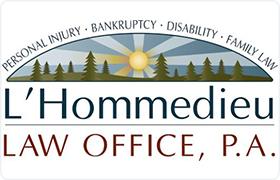Lewiston Bankruptcy Lawyer, Maine
Sponsored Law Firm
-
 x
x

Click For More Info:
-
L'Hommedieu Law Office, P.A.
190 Bates Street Lewiston, ME 04240» view mapBankruptcy & Debt More Than Just A Law Firm
L'Hommedieu Law Office, P.A. has been providing the best in legal representation in Bankruptcy, Personal Injury, Disability and Family law since 1997.
800-941-5060
Includes: Bankruptcy Litigation, Commercial Bankruptcy, Consumer Bankruptcy, Dissolution
Donald S. Hornblower
International Other, Divorce, DUI-DWI, Bankruptcy, Federal Appellate Practice
Status: In Good Standing
John W. Geismar
Tax, Health Care Other, Corporate, Commercial Bankruptcy
Status: In Good Standing Licensed: 42 Years
Richard J. O'Brien
Wills, Trusts, Reorganization, Bankruptcy
Status: In Good Standing Licensed: 42 Years
Neil S. Shankman
Landlord-Tenant, Litigation, Lawsuit & Dispute, Commercial Bankruptcy, Accident & Injury
Status: In Good Standing
 E. Chris L'Hommedieu Lewiston, ME
E. Chris L'Hommedieu Lewiston, ME Practice AreasExpertise
Practice AreasExpertise
